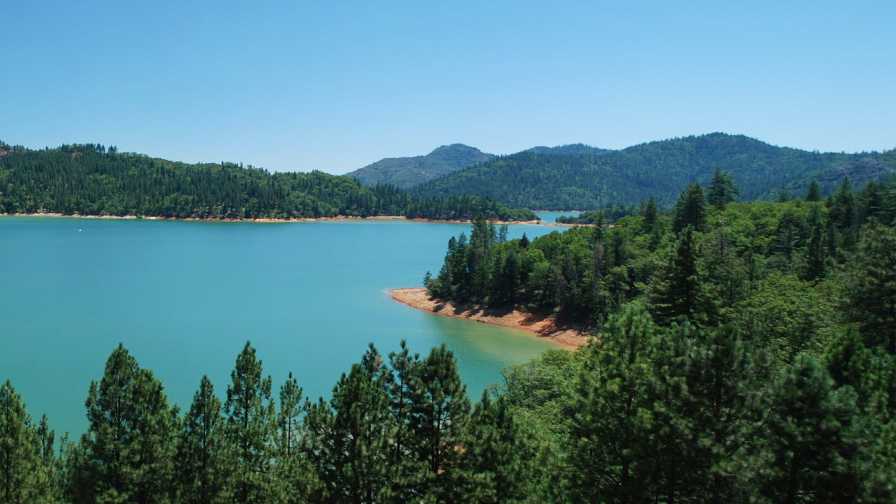Creative Ways to Manage Groundwater for Vegetable Crops

Part of the Managed Aquifer Recharge (MAR) program in California is to divert storm waters to the state’s largest reservoirs.
A few winters ago, while visiting San Francisco with my family, we did a popular tourist activity and walked across the Golden Gate Bridge. Halfway across, I looked down and marveled at the torrent of muddy water flowing out the mile-wide channel into the Pacific Ocean.
The rains had come down with force that winter and broke the drought that persisted for four years in California. Rivers throughout the state swelled with storm runoff and emptied millions of acre-feet of fresh water into the San Francisco Bay.
Last year was also a wet winter when more than a half dozen atmospheric rivers streamed moisture originating near Hawaii toward the California coast.
At the beginning of this winter, the weather pattern seemed to be headed for an encore performance. As early as November, a series of storms brought ample precipitation to the state. Then the rain backed off in early January, and we have had one of the driest Februarys on record.
I wish we could have made better use of millions of gallons of fresh water that flowed out into the ocean during the last two wet winters.
Although most of the state reservoirs are more than 70% full, groundwater supplies are still depleted in much of the state. In many regions, ground water is severely over-drafted, meaning that more water is annually removed by pumping then is recharged back into the underground aquifers.
When surface water deliveries were cutoff or curtailed during the drought, many growers pumped groundwater to keep their farming operations going. Groundwater levels dropped dramatically in some areas of the state, such as the Southern San Joaquin Valley.
One outcome of the drought was the Sustainable Ground Water Management Act, state legislation that requires residents in every watershed basin in California to develop and implement plans to bring their groundwater supplies back into sustainable management.
We Have Water, Just Not When We Need It
The trouble with the water supply in California is not so much that there is insufficient rainfall, but rather that the winter storms are erratic. If every drop of precipitation could be stored in a reservoir and metered into the existing network of rivers and canals, it would not be too difficult to meet the water demands of the state.
However, the reservoir system in California has limited capacity, and prospects for developing additional surface water storage are not promising.
With a warming climate, the snowpack in the Sierra mountains — the largest surface water storage in the state — will also become less reliable. The percentage of precipitation stored as snow each winter is expected to decline while the percentage of precipitation that will be lost immediately as runoff is expected to increase. That will cause more frequent flooding and contribute more muddy water that will surge out the Golden Gate into the ocean.
Is MAR a Valid Option?
Managed Aquifer Recharge (MAR) is an approach the California Department of Water Resources and many local water agencies are exploring. MAR captures and stores storm runoff in the state’s largest reservoirs, the deep aquifers that underlie most of the agricultural valleys, including the expansive San Joaquin Valley.
The idea is to divert a portion of storm runoff from rivers during the winter, and flood fallow agricultural fields, pastures, or dormant orchards situated on soil types that readily percolate down to the underground aquifers.
Water districts and groundwater management agencies are interested in MAR because it may lead to more sustainable management of groundwater supplies. Growers are interested in MAR because they are banking water that can be used during the next drought. Another benefit of MAR is the potential to lessen downstream flooding by diverting a portion of the peak flow in rivers that could cause levees to fail.
A challenge in implementing MAR has been to identify fields that are located on the right soil types. That’s usually course, textured soils with good drainage and devoid of deep clay layers that could impede percolation.
Slope is another limitation. Fields should have a minimal slope, or they will need checks to confine water into basins.
MAR May Earn Growers Credits
A net metering approach, such as used by power companies for crediting customers who have installed solar panels, would allow growers to redeem credit for the storm water that they infiltrate into the aquifer below their farms.
The irrigation districts would pump storm water from rivers into their irrigation canals. Growers would need to measure the volume of storm water they apply to their fields and orchards during the winter months. They would presumably receive a discount on their future water deliveries equal to the volume of water infiltrated, or perhaps a direct payment.
Other Options
In areas of the state, such as the Central Coast, where farms rely on groundwater rather than surface water for irrigation, other strategies can be used to infiltrate storm runoff.
In the Pajaro Valley, for example, some growers have taken land out of production and built basins in the low areas of their farms to infiltrate storm runoff that flows off their fields.
Another strategy is to plant low biomass cover crops, such as cereal rye or barley, in fields fallowed during the winter. After killing the cover crop with an herbicide during the early stages of development, the crop becomes a layer of straw on the soil surface, slowing runoff during storm events.
Studies conducted by University of California Cooperative Extension have shown that these low biomass cover crops increase storm water infiltration by 70% to 80% compared to bare fields. Also, the low biomass of the cover crop did not interfere with tillage operations necessary for planting vegetables in the early spring.
As the climate continues to warm and winter storms become less consistent, California farmers will need to make the most of the wet years to have enough water to grow crops during the dry years. Managed aquifer recharge will likely become an important tool they can use to keep water underneath their farms rather than in the sea.










